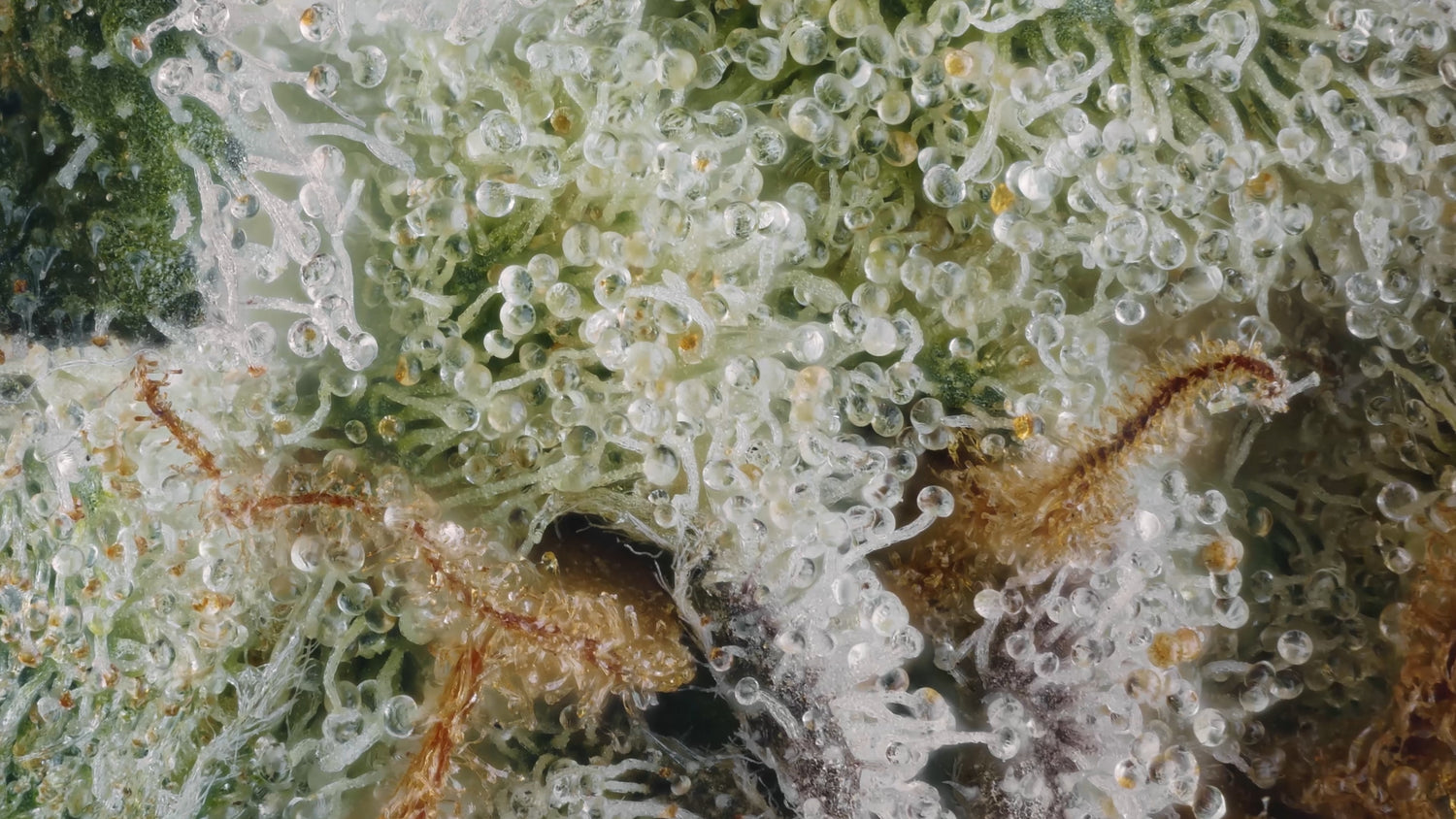Cannabinoids in other plants
Cannabinoids are known in a handful of plant species besides cannabis. These include Echinacea purpurea, Echinacea angustifolia, Acmella oleracea, Helichrysum umbraculigerum, and Radula marginata. The Echinacea species has the best-known cannabinoids that are not derived from Cannabis. They are lipophilic alkamides(alkylamides) and least 25 different alkylamides have been identified. Black truffles contain anandamide and Perrottetinene, is a moderately psychoactive cannabinoid, and has been isolated from different Radula varieties.
Echinacea purpurea

Echinacea angustifolia

Acmella oleracea

Helichrysum umbraculigerum

Radula marginata

Black truffles

Different Trichrome Facts
Epiphytes, such as Spanish moss and bromeliads, have evolved specialized trichomes that allow them to absorb nutrients from the air, particularly nitrogen and phosphorus. These nutrients are typically scarce in their environments, and the plants have adapted to extract them from atmospheric sources such as dust, rain, and mist.
The trichomes of epiphytic plants have several adaptations that allow them to absorb nutrients from the air. Firstly, the trichomes are typically very thin and elongated, which increases their surface area and exposure to atmospheric sources. Secondly, they are often covered in a waxy coating or cuticle that helps to trap moisture and nutrients. Finally, some trichomes may secrete enzymes or other chemicals that facilitate nutrient uptake.
In addition to absorbing nutrients from the air, some trichomes may also be involved in photosynthesis. For example, in the genus Tillandsia, the trichomes are capable of photosynthesis and may be the primary site of carbon fixation in the plant. This adaptation allows the plants to survive in environments where soil nutrients are limited and sunlight is abundant.
-
Venus Flytrap (Dionaea muscipula) - This plant has glandular trichomes that secrete digestive enzymes to capture and digest insects.
-
Sundew (Drosera spp.) - Sundews also have glandular trichomes that secrete digestive enzymes to capture insects.
-
Pitcher Plant (Sarracenia spp.) - This plant has slippery surfaces and downward-pointing hairs to trap insects. The plant then digests the insects with enzymes.
-
Hoya (Hoya spp.) - Hoyas have non-glandular trichomes that absorb moisture from the air.
-
Spanish Moss (Tillandsia usneoides) - This plant has trichomes that absorb water and nutrients directly from the air.
-
Woolly Bluecurls (Trichostema lanatum) - This plant has non-glandular trichomes that help to reduce water loss by trapping moisture around the plant.
-
Stinging Nettle (Urtica dioica) - Stinging nettle has stinging trichomes that can irritate the skin and release histamines.
-
Milkweed (Asclepias spp.) - Milkweed has trichomes that secrete a sticky, toxic sap to deter herbivores.
-
Cannabis (Cannabis sativa) - Cannabis has glandular trichomes that produce cannabinoids, which have various medicinal and psychoactive effects.
These are just a few examples of the many different types of plants with unique trichomes and plant hairs.
References:
- Benzing, D. H. (1975). The biology of the bromeliads. University of California Press.
- Lüttge, U. (2008). Photosynthetic flexibility and ecophysiological plasticity: questions and lessons from Clusia, the only CAM tree, pp. 435-453. In: C. Y. Chen & A. R. Kuo (eds.), Flora of Taiwan, Vol. 5: 2nd edition, Taiwan.
- Silverstone-Sopkin, P. A. (1990). The functional significance of trichomes: a review. New Phytologist, 116(3), 481-499.
Epiphytic plants with trichomes that absorb nutrients from the air, particularly nitrogen, have a unique adaptation that involves a symbiotic relationship with bacteria. The bacteria are able to fix nitrogen from the air and convert it into a form that the plant can use, while the plant provides the bacteria with a suitable habitat.
The bacteria responsible for nitrogen fixation in epiphytic plants are typically members of the genus Rhizobium or related groups, which are commonly found in the soil and in the roots of leguminous plants. In epiphytic plants, the bacteria are located in the trichome heads, which are specialized structures that provide a suitable environment for bacterial growth and nitrogen fixation.
The trichome heads of epiphytic plants provide a moist and protected environment for the bacteria, which is essential for their survival and nitrogen fixation. The bacteria are able to obtain energy from the plant through the secretion of nod factors, which stimulate the formation of nodules on the surface of the trichomes. These nodules provide a direct pathway for the transport of nitrogen from the bacteria to the plant.
The nitrogen fixed by the bacteria in the trichome heads is incorporated into the plant's tissues, and can be used for a variety of functions including growth and development. The plant may also recycle nitrogen from older tissues to newer tissues, particularly in times of nitrogen scarcity.
Overall, the symbiotic relationship between bacteria and epiphytic plants with trichomes is an important adaptation that allows these plants to survive in environments where nutrients are scarce. The bacteria provide a critical source of nitrogen for the plants, while the plants provide a suitable habitat for bacterial growth and nitrogen fixation.
References:
- Benzing, D. H. (1990). Vascular epiphytes: general biology and related biota. Cambridge University Press.
- Dodd, J. C., & Perez-Alfocea, F. (2012). Microbial symbiosis and plant nutrient acquisition. Springer Science & Business Media.
- González-Guerrero, M., & Azcón-Aguilar, C. (2014). Nodule formation and functioning. In The Rhizosphere (pp. 221-233). Springer, Cham.

